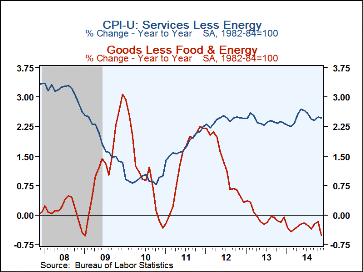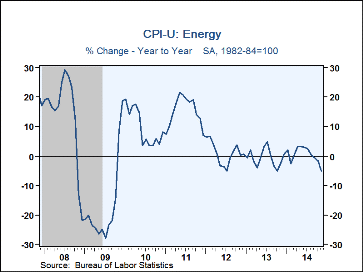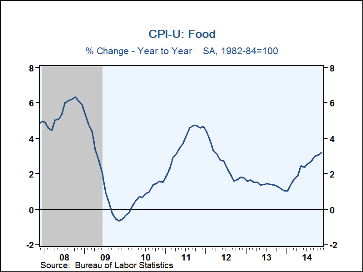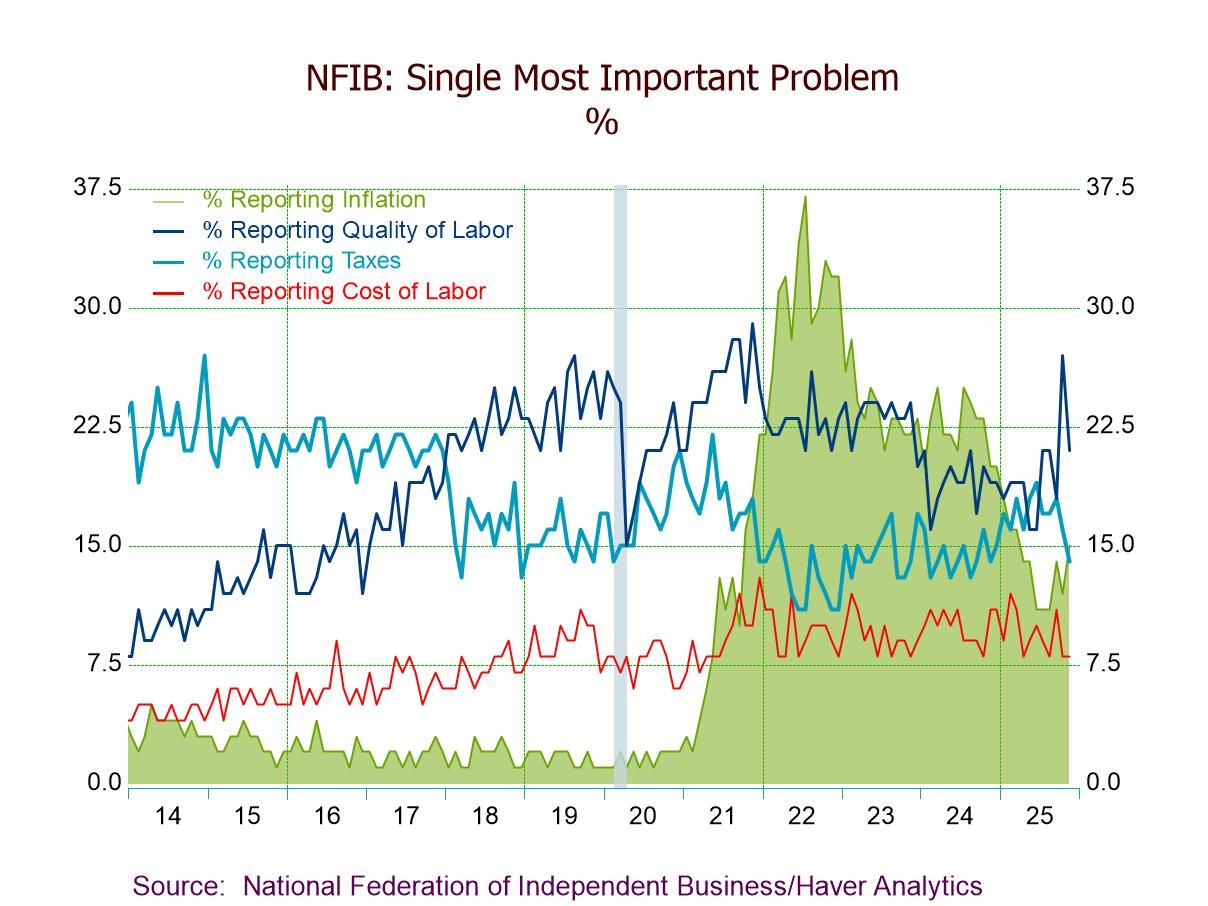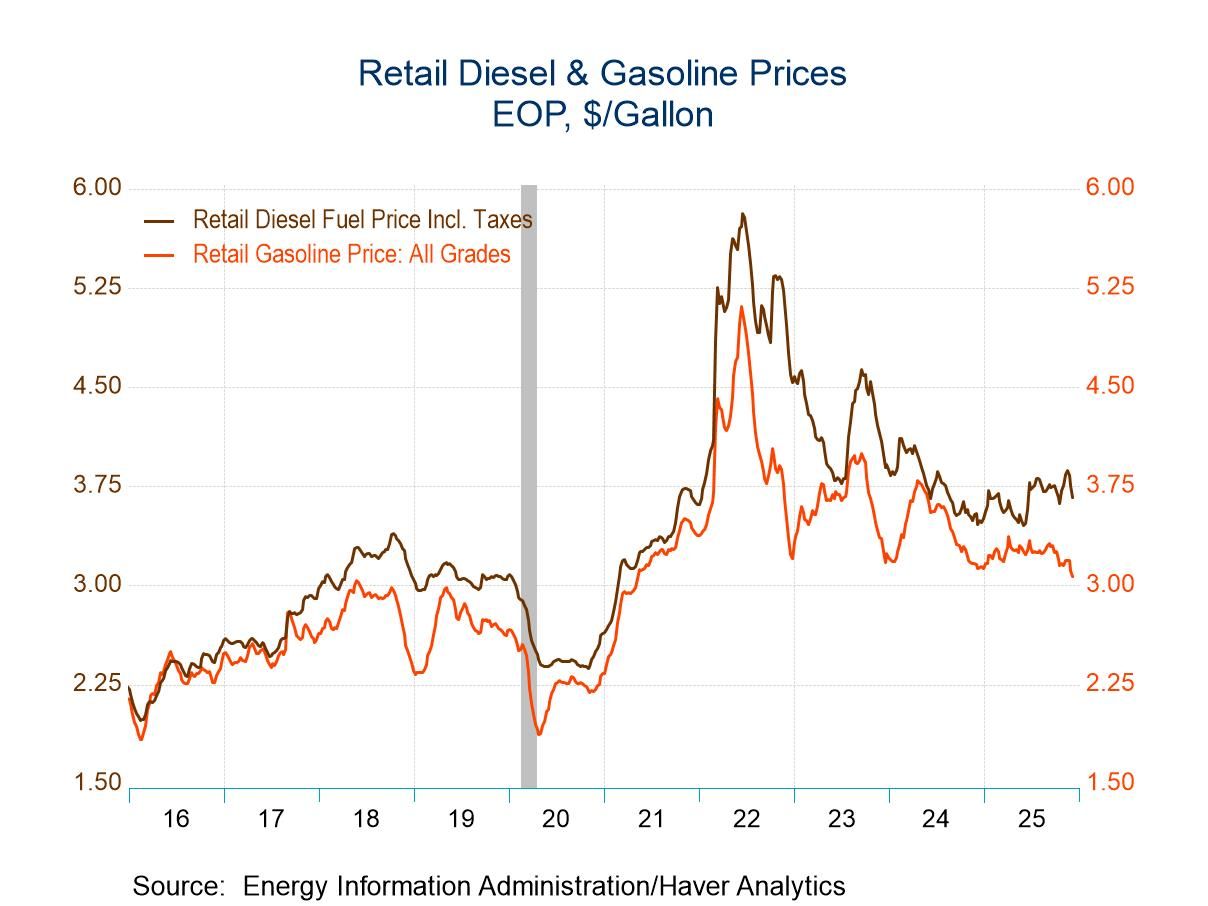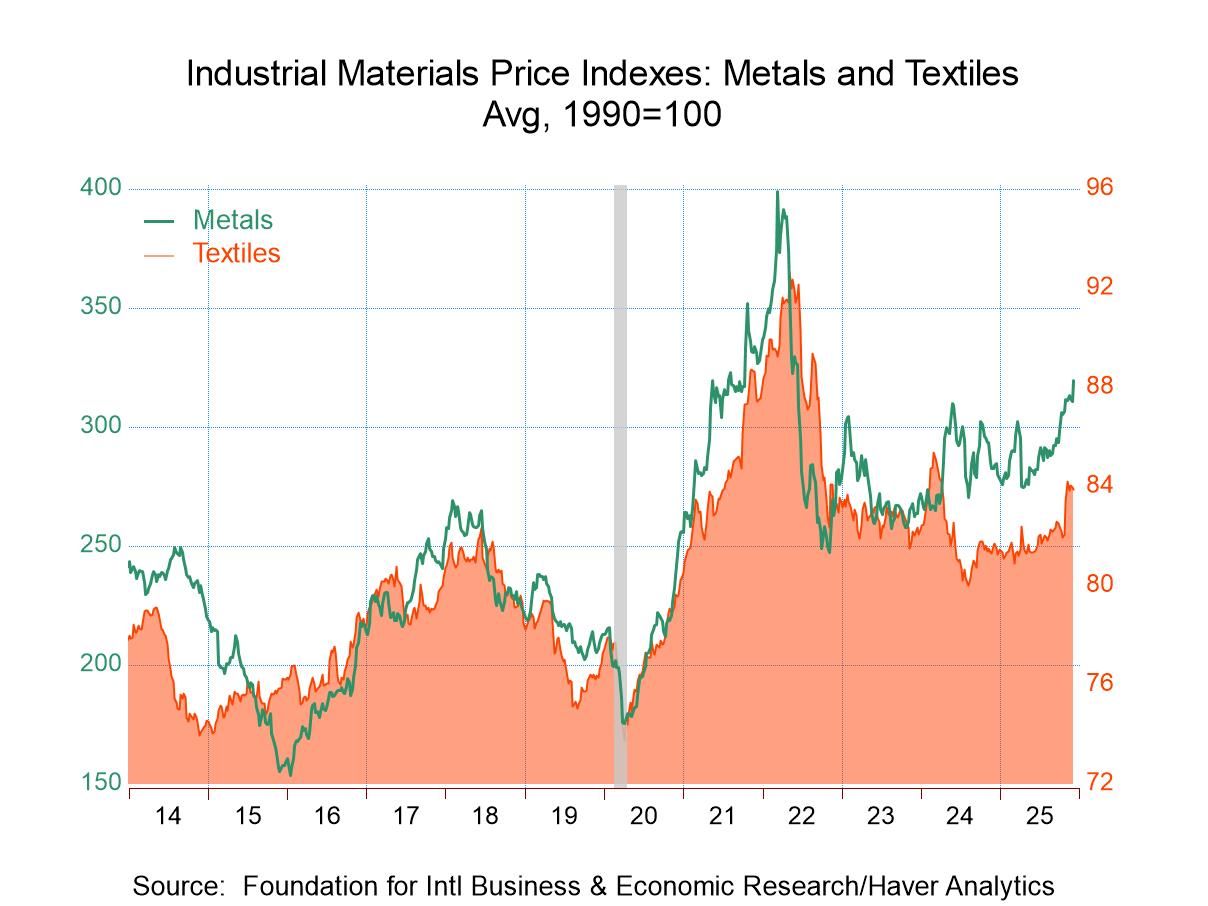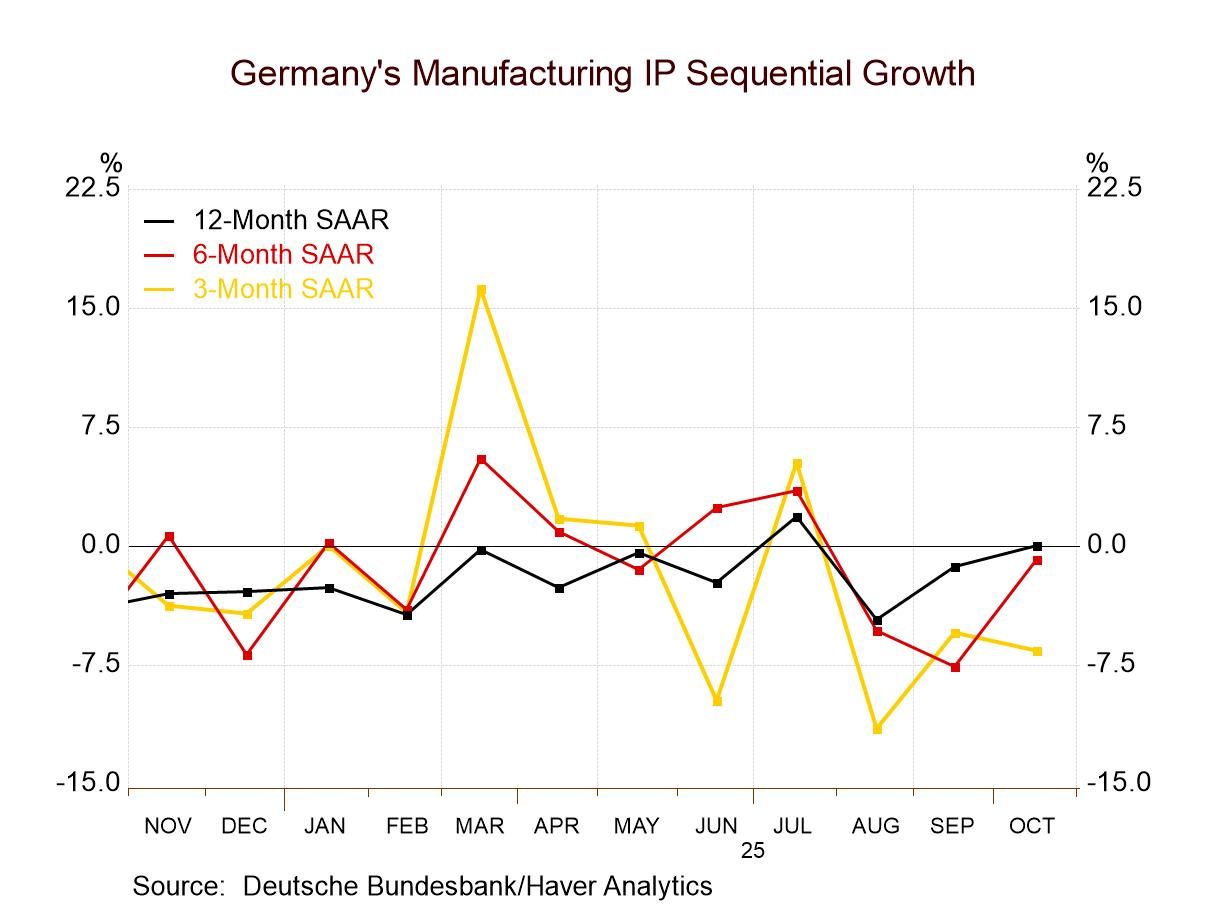 Global| Dec 17 2014
Global| Dec 17 2014U.S. Consumer Prices Post Largest Decline Since 2008; Core Prices Moderate
by:Tom Moeller
|in:Economy in Brief
Summary
Inflationary pressures remain well contained. The consumer price index fell 0.3% during November (+1.3% y/y) following unrevised stability during October. It was the largest monthly decline since December 2008 and outpaced [...]
Inflationary pressures remain well contained. The consumer price index fell 0.3% during November (+1.3% y/y) following unrevised stability during October. It was the largest monthly decline since December 2008 and outpaced expectations for a 0.1% dip in the Action Economics Forecast Survey. A 3.8% energy price decline (-4.9% y/y) led the CPI lower. Prices excluding food & energy ticked up an expected 0.1% (1.7% y/y) after a 0.2% rise.
Energy prices were pulled lower by a 6.6% drop in gasoline prices (-10.5% y/y). Prices have fallen 14.3% during the last five months. Fuel oil prices declined 3.5% (-10.1% y/y) while natural gas prices eased 1.7% (+3.2% y/y), the sixth decline in the last seven months. Electricity costs ticked 0.1% higher (2.8% y/y). A 0.2% rise in food prices (3.2% y/y) offset part of this downward pressure. Egg prices gained 1.1% (6.2% y/y) while meat prices rose 0.3% (12.8% y/y). To the downside, fruit & vegetable prices moved 0.7% lower (+1.6% y/y) and dairy prices eased 0.2% (+5.0% y/y).
Prices for goods excluding food & energy declined 0.4%, pulled down by a 1.3% drop in appliance costs (-4.9% y/y) and a 1.1% decline in apparel prices (-0.4% y/y). Also falling were recreation goods prices by 0.6% (-2.8% y/y) and new vehicle prices, off 0.1% (+0.6% y/y). These declines were countered by a 0.6% rise in medical care goods prices (3.1 y/y) and a 0.1% uptick in furniture & bedding prices (-2.2% y/y).
Continuing to firm were services prices by 0.2%. The gain was paced by a 1.1% rise in public transportation prices (-2.4% y/y) and a 0.4% increase in tuition costs (3.3% y/y). Medical care prices also gained 0.4% (2.3% y/y). Rents of primary residence costs increased 0.3% (3.5% y/y) and owners equivalent rent of primary residence costs rose 0.2% (2.7% y/y). Recreation prices slipped marginally (+1.2% y/y).
The consumer price data is available in Haver's USECON database while detailed figures can be found in CPIDATA. The expectations figure is from Action Economics and is found in the AS1REPNA database.
| Consumer Price Index (%) | Nov | Oct | Sep | Nov Y/Y | 2013 | 2012 | 2011 |
|---|---|---|---|---|---|---|---|
| Total | -0.3 | 0.0 | 0.1 | 1.3 | 1.5 | 2.1 | 3.2 |
| Total less Food & Energy | 0.1 | 0.2 | 0.1 | 1.7 | 1.8 | 2.1 | 1.7 |
| Goods less Food & Energy | -0.4 | 0.0 | 0.0 | -0.5 | -0.0 | 1.3 | 1.3 |
| Services less Energy | 0.2 | 0.3 | 0.2 | 2.5 | 2.4 | 2.4 | 1.8 |
| Food | 0.2 | 0.1 | 0.3 | 3.2 | 1.4 | 2.6 | 3.7 |
| Energy | -3.8 | -1.9 | -0.7 | -4.9 | -0.7 | 0.9 | 15.2 |
Tom Moeller
AuthorMore in Author Profile »Prior to joining Haver Analytics in 2000, Mr. Moeller worked as the Economist at Chancellor Capital Management from 1985 to 1999. There, he developed comprehensive economic forecasts and interpreted economic data for equity and fixed income portfolio managers. Also at Chancellor, Mr. Moeller worked as an equity analyst and was responsible for researching and rating companies in the economically sensitive automobile and housing industries for investment in Chancellor’s equity portfolio. Prior to joining Chancellor, Mr. Moeller was an Economist at Citibank from 1979 to 1984. He also analyzed pricing behavior in the metals industry for the Council on Wage and Price Stability in Washington, D.C. In 1999, Mr. Moeller received the award for most accurate forecast from the Forecasters' Club of New York. From 1990 to 1992 he was President of the New York Association for Business Economists. Mr. Moeller earned an M.B.A. in Finance from Fordham University, where he graduated in 1987. He holds a Bachelor of Arts in Economics from George Washington University.



